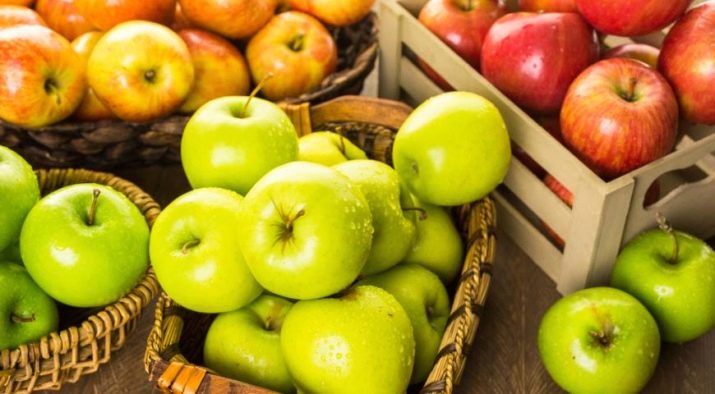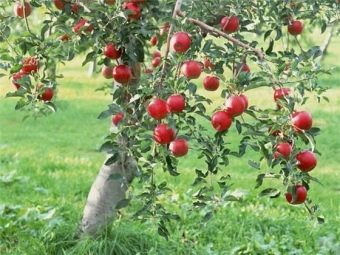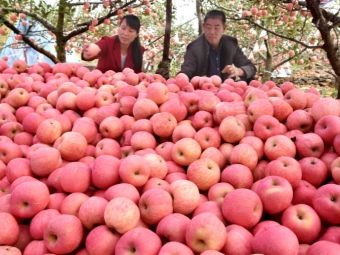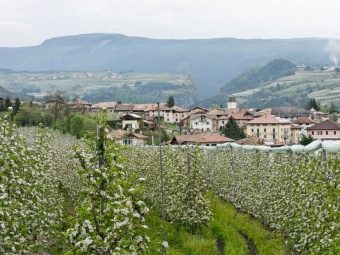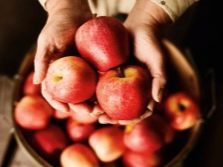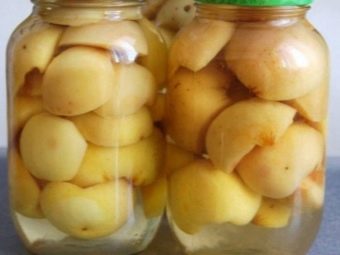Apple: is it a fruit or berry, where is it grown and how is it used?
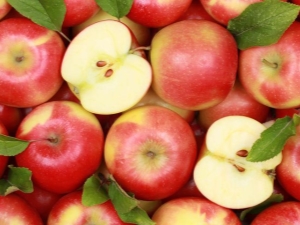
Apple is one of the most famous fruits in the world, which in our country, perhaps, is the most common.The apple tree is distinguished by comparative unpretentiousness to growing conditions, and its fruits are distinguished by a rich content of beneficial substances and the ability to be stored for a rather long time fresh. All this makes apples a very useful fruit in a climate that is cooler than subtropical. Although every person is sure that he knows all or almost everything about apples, the enormous popularity of such a product literally makes you know at least a little more about it.
What it is?
For a start, let's solve a rather popular argument among the people that concerns the fruits of apple trees. Some of our compatriots are not sure what an apple really is - a berry or a fruit. The answer to this question is quite simple, because the berries are usually called fruits that grow on the ground in the form of a shrub, whereas the fruits of trees are usually called fruits. It is for this reason, as well as for several others, which biologists separately distinguish, to call an apple a fruit and in no case a berry.
For example, berries and fruits are intended for plant reproduction, but berries usually do not fall off. Their function is to be eaten by animals or birds and in this way be carried as far as possible from the parent plant. Apples, like any other fruit, as they ripen just fall from the tree and can allow the apple to multiply without the participation of other organisms.
At the same time, the variety variety of modern apples is so great that it is not always so easy to find in them a common one. The product can vary greatly in taste (from clover-sour to very sweet) and in color (even a rough classification involves the division into green, red and yellow apples).
Given the enormous popularity of this fruit, it is not surprising that it is one of the most used ingredients for various dishes, although the overwhelming amount of the crop is still consumed fresh, which is also facilitated by the long shelf life of the product.
Varieties and term of life of apple trees
The enormous popularity of apples as a homemade fruit crop has led to the fact that today there are dozens, if not hundreds of species of this tree in the world, because in addition to wild varieties, mankind has developed many domesticated varieties. In the process of selection, people managed to change almost all the parameters of the tree to fit their needs - for example, in the original, an apple tree can grow up to 12 meters in height, but due to the inconvenience of picking fruits in gardens, mostly dwarf varieties grow, whose height does not exceed two meters.
Another plus of growing apple trees is that such a tree is able to please its owners with tasty fruits for a very long time. In the wild, there are cases when an apple tree has lived much longer than a person usually lives - some specimens celebrated their own century and successfully lived on. However, those summer residents who have already gathered to provide their grandchildren and great-grandchildren with tasty fruits for many years to come now will have to be disappointed - in the conditions of the home garden an apple tree usually does not grow for so long. The fact is that after reaching the age of thirty, the tree is no longer young, and its fecundity begins to decline, and even the famous rejuvenating pruning recommended for all gardeners will not bring any benefit at this age. That is why for high yields to update the apple orchard should be no less than every 25 years.
At the same time, in farms engaged in industrial harvesting of apples, the useful life of an apple tree is even shorter. Experts point out that before the age of seven, it should not be expected from an apple tree of outstanding harvest, if only because it is still too young, and the first signs of a decline in yields are already observed at 15 years of age.In short, if you need a garden solely for the sake of fruit, then the apple tree will give really high yields for only ten years.
For most consumers, the difference between individual varieties of apple trees lies solely in the taste of their apples, although color, of course, also matters. The definition of the most delicious variety of apples has all the signs of subjectivity, because tastes do not argue, and yet, according to numerous polls, Red Delicious is considered the most popular variety of apples all over the world. It should be noted that the mass consumer is more inclined to choose red apples with a pronounced sweet taste, so if you are a connoisseur of green or yellow fruits with sourness, you should not be guided by such “charts”.
It is much easier to determine the world's largest apple, because this indicator is no longer subjective, but it is measurable. Even a fruit weighing 0.5 kilograms should be considered huge, because most of its relatives do not reach this size, but the record, as is often the case, is divorced from everyday reality much more. The largest apple is considered to be a fruit grown in 2005 in Japan - its weight was an amazing 1.85 kg. It should be noted that the varietal apples themselves do not beat the most amazing records, so all the fruits of masterpieces' sizes usually grow in the gardens of avid agronomists who cross different varieties among themselves and actively take care of the trees.
By the way, the lack of free space in the garden does not mean that the number of varieties of apples that can be grown there should be limited. The fact is that this plant tolerates vaccination perfectly, and a graft with a stock does not necessarily have to be of the same kind. At the same time, the branch transferred from another tree, even after grafting, will continue to bear fruits with such apples, which were typical for its mother plant, and therefore you should not be surprised if an enterprising host has ripe green, yellow and red fruits on the same tree.
Producing countries
Apples belong to a relatively small group of fruits that are grown absolutely everywhere, and, perhaps, there is no such country or territory where there are no apple trees at all. It is worth noting, however, an interesting fact: scientists have calculated that growing only one kilogram of apples takes 700 liters of water, which, of course, affects the ability of some countries to produce this fruit. However, neither this fact nor the huge popularity of the fruit does not lead to a decrease in demand for it, on the contrary, in the last decade there has been a steady growth trend in apple production throughout the world. Unfortunately, statistics on the production of this valuable product is updated quite rarely, because at the time of this writing, the most recent information was available only at the end of 2016 - then the world production of fruit almost reached 90 million tons.
If we talk about the leader in the production of apples, it is obvious - today China grows about half of all apples in the world. Interestingly, another decade ago, the leader was the same country, but with a noticeably smaller margin from the pursuers, and therefore it can be concluded that the Chinese value the useful properties of such a product more and more. Predictably, China is the main global exporter of apples.
The second place in terms of yield is the United States of America, which, like China, has a huge territory, most of which will not manage to grow tropical fruits. At the same time, there are about ten times less American apples in the world than Chinese ones, so the gap between the first and second places is huge - 4.6 million tons against 44.4. An interesting fact is that approximately 60% of the country's total yield comes from just one Washington state, so the potential for expanding production is present, and it is quite large.Today, much of the American apples are used domestically, because the United States, although it is the second largest producer in the world, can only boast of exporting to the top five.
The honorable third place in the world, and at the same time the first in Europe, in apple cultivation was taken by Poland, its result is 3.6 million tons for 2016. For a relatively small country, this figure is truly huge, so it is not surprising that in some years it has even been the world leader in the export of such products abroad. Interestingly, in some years more than half of the apples exported by Poland came to Russia, which, despite the huge area and the constant entry into the top ten world producers, is also one of the world's main importers of this fruit.
Fourth to sixth places are divided between countries located in West and South Asia. Apple production in 2016 in Turkey and India reached 2.9 million tons each, and in Iran - 2.8 million tons. Of these countries, Turkey was the most notable exporter of fruit, and she sells apples mainly to neighboring countries.
In general, the leaders usually include 15-16 states that produce the largest number of apples, and although it does not make sense to talk in detail about them, at least it’s worth mentioning the names and volumes of production. In addition to the mentioned Poland, traditionally many apples are grown in Europe, which is especially striking in the context of the relatively low area of the local countries. The largest European producers of apples in 2016 harvested such a crop: Italy - 2.46 million tons, France - 1.82 million tons, Ukraine - 1.1 million tons. It also includes Russia, which is located on two continents, and, despite the huge area, it grows relatively few apples - 1.84 million tons were harvested here.
A significant percentage of apples are grown in Latin America, especially in that part of it, which is called South America. The ability to grow a variety of tropical fruits, which our compatriots are often considered more valuable than apples, did not prevent Chile from collecting 1.76 million tons in 2016, Brazil - 1.05 million tons, Argentina - 968 thousand tons, and Mexico - 717 thousand tons. For such large countries (except Chile), such indicators do not seem so impressive, but you need to understand that in these conditions, apples are far from the only alternative culture. By the way, sparsely populated Chile, which grows a disproportionately large number of apples, is among the world leaders in exports, along with China, Poland, the United States, Italy and France.
The picture of world apple production will not be complete, if you do not mention two more countries that are actively engaged in the cultivation of apple trees. Among the large and densely populated continents, Africa has not yet been represented, which is characterized by the cultivation of tropical crops, which are less dependent on a large amount of moisture, but even here some countries have significant success - for example, in South Africa in 2016 they collected 918,000 tons of these fruits. Japan can also be attributed to the “apple” countries, which were not mentioned above only because many of its neighbors in the continent harvest much more - however, even here the harvest reached 765 thousand tons.
There is also a separate group of six countries that some decade ago were not at all considered serious apple exporters, but in recent years have made significant progress in increasing yields. All these states are distinguished by a relatively small population, which is why they actively sell grown fruit abroad. In 2016, these countries harvested the following apples: New Zealand - 412 thousand tons, Canada - 357 thousand tons, Serbia - 328 thousand tons, Australia - 308 thousand tons, Azerbaijan - 254 thousand tons, Kazakhstan - 188 thousand tons.
Application of fruits
If we abandon the desire to make a conventional face mask from any useful food typical of modern women, then it turns out that an apple is a product that is actively used in food and practically has no other destinations. However, in the same cuisine, the use of apple is very wide, and its theoretical use can be divided into food and beverages.
Since the product is solid, more often it is, of course, eaten. A huge percentage of apples are eaten fresh, because this fruit is the most delicious fresh, and the ability to store without preservation for several months only contributes to eating it without any additional processing. Most often, fresh fruits are used as dessert or instead of a light snack, but if you wish, you can also find recipes for cold salads, to which this fruit is added. In addition, fresh apples in a blender are often mashed. Such a product is especially important for young children, whose teeth are temporarily unable to bite through a large fruit, but such an dish can also be found by admirers among adults.
Traditionally, some methods of extending the shelf life of apples are also used, which in the direct sense are not considered to be canning. So, dried apples are very popular. Fruits, dried both in the open sun and in the oven, are actively used as the same light snack, as well as an ingredient for desserts or the main raw material for cooking compotes. In addition, some housewives harvest more soaked or pickled apples, which in recent decades have somewhat lost in popularity.
Can be apples and canned - for example, slices in compote or in the composition of jam or jam. Some mistresses from small fruits make jam, which does not imply chopping the fruit at all. Flavored jams and mousses are also prepared with the addition of cinnamon. All described products can be stored rolled up in banks for many years and can be useful at any time.
Since we are talking about cooking fruit, it is necessary to note such a classic dish of the national cuisine, like baked apples. Today, this dish is more perceived as a dessert - in this case, the fruit is baked in combination with honey, nuts and berries, such as cranberries. However, apples can be baked as a side dish for meat dishes - for example, a goose baked with apples today seems to us to be a very sophisticated dish, but a hundred years ago was a traditional Christmas dish for our ancestors, at least in the village.
It should be noted and the fact that fresh apples or jam from it are perhaps the most popular filling in the world for various pastries. Every European nation has its own variants of pies or buns with this fruit, and such culinary delights, like charlotte or apple strudel, have become world heritage, let alone the buns and apple pies, which are a typical dish for most domestic canteens.
Finally, apples are used as a source of pectin, which is extracted from them industrially. This product is very necessary for the production of marmalade, pastila and other similar delicacies, and although the taste of the apple in the final product may not be felt at all, it does not do without the most popular fruit in the world.
Considering that apples are quite juicy fruits, almost always with a high content of sugars, it is not surprising that they are actively producing various beverages. The most natural and useful is concentrated apple juice, pressed from fresh fruits. It retains almost all the benefits that were contained in the fruit.With the help of heat treatment, you can make such popular drinks as compote or jelly from fresh or dried apple, and although the vitamin content will not be as high as in compote, the volume of the final product will be much larger with less raw materials.
The high content of sugars in the apple contributes to the active use of this fruit in the production of alcohol. Perhaps the most popular alcohol-containing apple drink is the famous cider, which upon further distillation acquires a much higher degree and turns into a traditional drink for the north of France - calvados, which, in fact, is a kind of brandy. At home, good wine is often made from concentrated apple juice, and apple processing waste on an industrial scale is often used to produce fruit wines, which usually cannot be boasted with high quality.
Fresh apples can also be used as a fermenting ingredient in the preparation of kvass, thanks to which the latter acquires an unusual taste and aroma. Such a drink has not yet been adopted by industrialists, but many housewives who make kvass at home are increasingly resorting to similar experiments with ingredients. As for the industrialists, they produce an even more fermented product - apple cider vinegar, which has a less pungent smell and taste, and therefore is actively used for the preparation of salads.
An unusual apple sauce can be a good addition to meat dishes and an alternative to ketchup.
In the video below you are waiting for tips on growing apples.

